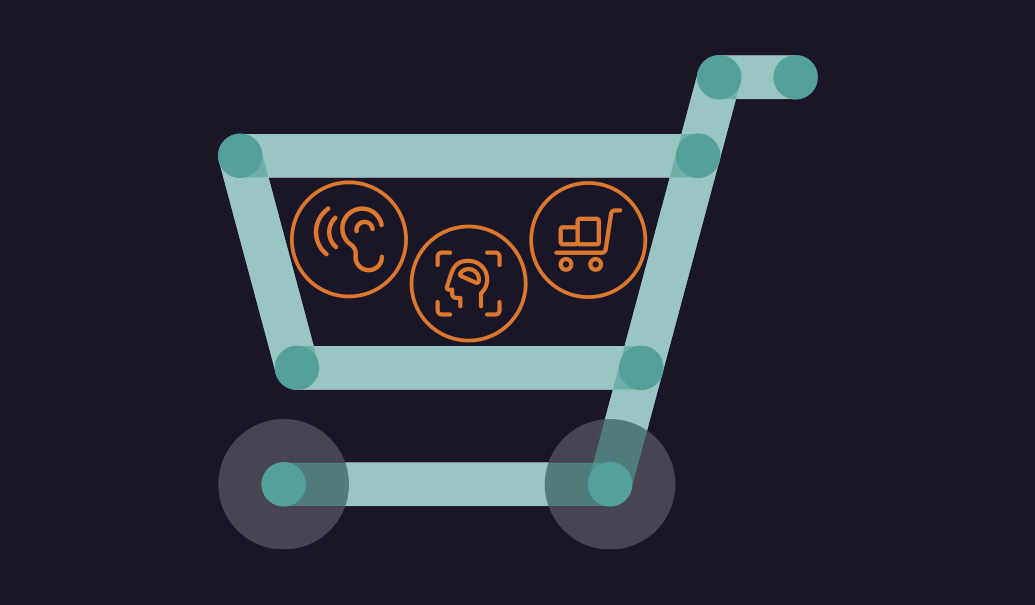Imagine, if you will, a scenario: A natural disaster in a distant corner of the world shutters one of your tier three suppliers, setting off a chain reaction that will lead to a shortage for one of your products two months from now. Luckily, your artificial intelligence (AI)-driven supply chain “control tower” has already sounded the alarm, throttling upcoming trade promotions for this item and offering your channel partners appropriate alternatives weeks (or even months) in advance.
Or this one: Your customer feedback antenna picks up a crumb of stray customer dissatisfaction with the packaging for one of your products, triggering an automated message to your Amazon account executive nudging him to investigate.
Or this one: You have a customer who’s this close to churning but who instead suddenly makes a purchase after receiving the perfect product recommendation and offer at the most propitious time—thanks to your state-of-the-art, AI-driven personalization engine.
These aren’t outlandish scenarios. They are use cases that are possible today, thanks to advances in AI, machine learning and natural language processing (NLP), as well as a growing recognition that customers demand this level of responsiveness, personalization and transparency into the supply chain for the things they buy. While the metaverse and digital goods like non-fungible tokens (NFTs) may one day catch fire, in our conversations with business leaders from across pharma, banking, retail, hospitality, food and beverage and others, we see three major trends that will drive the retail agenda for the next handful of years.
First, consumers expect brands to engage with them in an ongoing, two-way dialogue across a range of digital and in-person platforms and experiences. Second, they expect brands to use data, AI and technology to deliver a seamless, highly personalized customer journey. And third, they expect unprecedented levels of transparency into brands’ supply chains such that product and service delivery satisfy their own needs, not the suppliers’.
While these trends emerged against the backdrop of the pandemic—when in-person shopping evaporated, supply chains broke down and shoppers migrated online—they’re not going away. To stay ahead of these trends, brands must master three elements of customer experience because consumers demand it.
The 3 trends shaping the future of retail
Retail trend No. 1: Omniscience (“Listen”). Once upon a time, brands had one way to harvest consumer sentiment about their products: by asking them. But traditional market research suffers from three primary constraints: (1) It’s time consuming and expensive, (2) it’s impossible to do at scale and (3) interviewer bias can’t be eliminated. Consumers today express themselves in a growing number of ways, including reviews on websites such as Amazon, posts on social media and more. Thankfully, NLP algorithms make it possible to ingest and parse a huge volume of unstructured consumer feedback to discern unmet consumer needs hidden within.
But always-on listening only satisfies one part of consumer expectations. The other, arguably more important, part is having brands act upon what they’ve learned. Thanks to the astounding volume of public consumer chatter, and AI’s ability to process it with unflagging consistency, brands can now engage with consumers in a continuous effort to add value in the realms of customer service, logistics, messaging and product quality. Brands can now discover a lot more about their customers than was ever possible through traditional market research. Considering the customer’s entire journey in this way is critical in today’s environment, when people’s social needs, such as feeling a sense of community or wanting to be “heard,” will impact their buying habits.
Retail trend No. 2: Intimacy (“Personalize”). Roughly 80% of consumers say they are more likely to make a purchase when a brand offers a personalized experience, and they reward companies for doing so by spending nearly 35% more when the shopping experience is personalized.
Yet, outside of true digitally native companies such as Amazon, Airbnb and others, companies today simply do not deliver a personalized, end-to-end customer experience. This is for two main reasons:
- The retailer “black box.” Channel partners routinely hoard data on their consumers’ purchasing habits, leaving brands with a dearth of information on their own end customers. This is why you see so many brands shifting to targeting consumers directly, with brands gradually increasing the direct-to-consumer share of their business.
- The “left to right” data fallacy. Many companies mistakenly believe they must move from left to right—by first corralling all sources of consumer data and only then using it to personalize the customer journey with AI-informed recommendations and offerings. But data is springing from new sources and in new forms daily; keeping pace is impossible. We recommend thinking from right to left—by starting with the business use case and then securing the data needed to power it.
Companies that choose to go directly to consumers must make do with the modest amount of first-party data they possess, plus whatever consumer data their more magnanimous channel partners are willing to furnish. It’s like a jigsaw puzzle with most of the pieces missing and no visual of the complete picture. But this is where AI comes to the rescue.
Collaborative filtering models, similar to Netflix’s AI-driven recommendation engine, can make sophisticated, highly personalized recommendations based on a consumer’s own purchasing patterns, those of similar consumers and items often bought together. We can go further by calculating consumer elasticity to various tactics and offers by playing with different combinations for products and SKUs, stitching consumer journeys across channels and triggering timely interventions. Personalization needn’t be confined to offers; brands can pull other levers ranging from the perfect email subject line to the gamification of a loyalty program.
A consumer goods client of ours recently conducted a 30-day pilot to do just this and experienced a 200% increase in customer conversion rate and 300% increase in at-risk customer conversion rate. Incredibly, nearly 70% of purchases during the pilot were of an AI-recommended product. This is the power AI holds to use novel sources of data to understand how consumers engage with brands and marketplaces to personalize the customer experience at business-to-consumer scale.
Retail trend No. 3: Transparency (“Fulfill”). Retailers have embraced an omnichannel approach to sales and marketing because consumers demand a seamless buying experience with themselves at the center. Many brands, however, discuss omnichannel only in the context of orchestration between marketing channels, neglecting the confounding effect it can have on logistics—an effect magnified by the pandemic, when tens of millions of shoppers moved online and expected curbside pickup and at-home product returns.
Today, 90% of customers say they want the option to order online and pick up curbside. More than 30% of cart abandonment instances happen because the item will not arrive in a timeframe that’s meaningful to the consumer. And that’s why 75% of retailers were striving to offer two-day shipping before the end of 2022, and 42% are aiming for one-day shipping.
Using tried-and-true methods and software platforms, retailers have by now perfected the trifecta of sourcing, manufacturing and demand sensing. Supply chain, however, is emerging as the area in greatest need for integration—from sourcing of raw materials to product delivery. With roughly half of consumers saying a bad shipping experience would cause them to ditch a retailer, companies overlook the importance of last-mile delivery at their own peril. However, integration doesn’t require integrating a production planning system with a supply chain platform. We believe the biggest unmet need facing retailers is for an all-knowing “control tower”—a smart super-system that sits atop and integrates a company’s sourcing, manufacturing and demand-sensing platforms to guarantee flawless delivery. Given sufficient data, AI can process information from all these disparate data streams to create a linkage between sourcing, manufacturing and last-mile logistics that allows us to fulfill our promise to consumers.
Using AI to build end-to-end omnichannel customer relationships
The consumer experience is evolving from one built on a transactional process of in-store shopping to one rooted in deep, ongoing and enriching omnichannel relationships. To develop these stronger and deeper relationships, retailers must understand and act upon what their customers care about, create meaningful end-to-end buying experiences and maintain the discipline and agility to deliver on their commitments. To do this, retailers must stitch together all phases of their go-to-market strategies, from demand sensing and demand generation to manufacturing and logistics. This requires infusing the entire organization with digital, analytics and technology to make smarter, faster decisions and tying it together with seamless sales-marketing alignment as well as processes and incentives that promote end-to-end omnichannel customer relationships.
Add insights to your inbox
We’ll send you content you’ll want to read – and put to use.
















